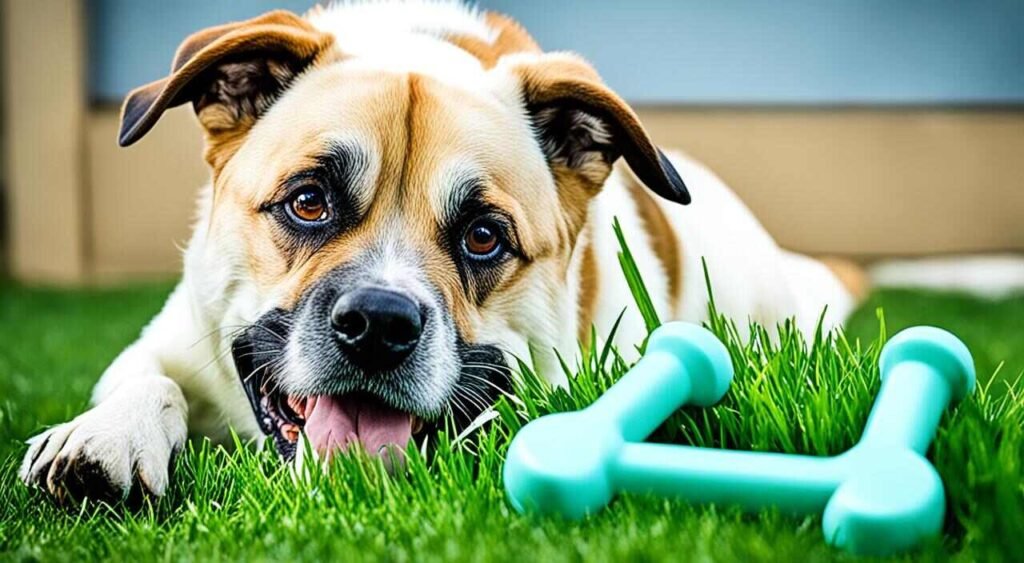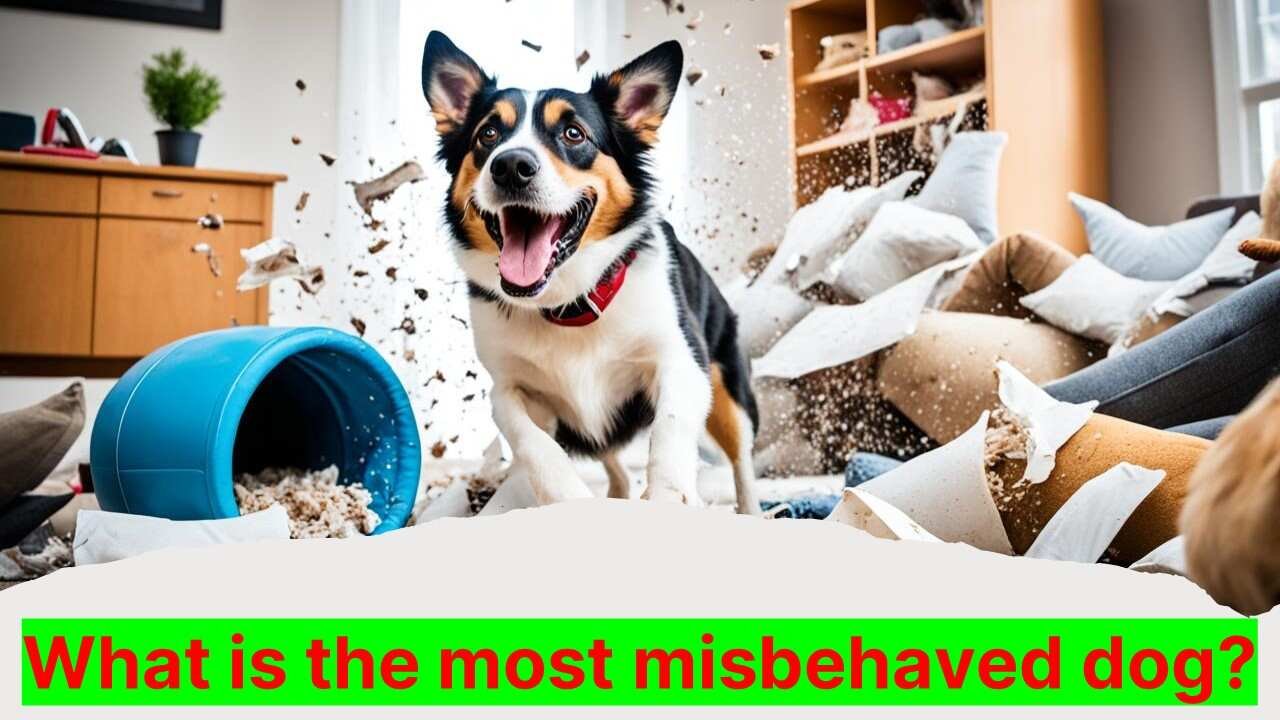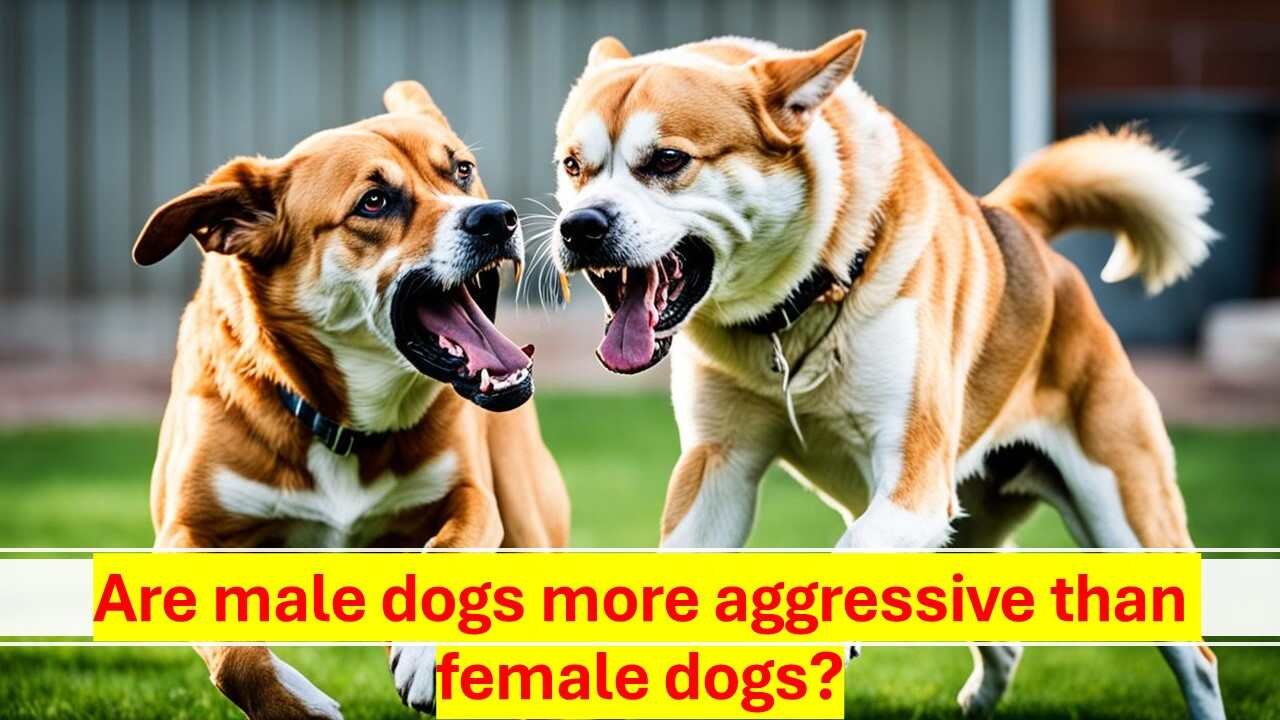Eating grass is a common thing for dogs. But, it might worry you if you fear chemicals or parasites. Dogs eat grass for a few reasons. It might come from their wild roots, show they have a health or behavior issue, or they need certain nutrients. Knowing why they do this is key. It helps you figure out how to make them stop, if needed.
Key Takeaways:
- Grass eating is a normal behavior for dogs but can raise concerns about chemicals and parasites.
- Reasons dogs eat grass include inherited behavior, health or behavioral issues, and nutrient needs.
- Understanding the reasons behind grass eating is crucial in addressing the behavior.
- Preventing grass ingestion is important for pet health and well-being.
- Consulting with a veterinarian can provide guidance on training techniques and natural remedies to stop grass eating.
Why Do Dogs Eat Grass?
There are many reasons why dogs eat grass. Some do it because they like the taste and feel. Others might do it because they lack certain nutrients or to settle their stomachs. Boredom, instinct, and anxiety can also play a part.
Eating grass can be fun for dogs. The green leaves and the act of chewing appeal to them. This is a sign of pica, where dogs eat things that aren’t food.
Sometimes, dogs eat grass to get nutrients they need. They might know there are special nutrients in grass that they’re missing in their food.
By eating grass, dogs try to get nutrients they need.
Grass might help a dog’s upset stomach. It can make them vomit and get rid of bad things in their system. This can be good if they’ve eaten something they shouldn’t.
However, dogs might also eat grass because they’re bored or anxious. It can be a way for them to calm down or distract themselves.
To understand why your dog eats grass, look at the situation. Are they bored, nervous, or feeling sick?
If your dog eats too much grass or if you see sudden changes, check with a vet. They can make sure your dog is okay.
Is Eating Grass Bad for Dogs?
Although it might not seem like a big deal, dogs eating grass can be risky. Pet owners should know the dangers. They need to protect their dogs.
Grass often has chemicals from pesticides. These can hurt dogs if eaten. They might face stomach problems, allergies, or harm to their organs.
Grass can also hide parasites and germs. These can give dogs illnesses. This includes bugs like fleas, ticks, and worms.
“Grass may contain chemicals and toxins, as well as parasites and microorganisms that can cause infectious diseases.”
Some human foods might be in the grass. Dogs could eat these with the grass. Foods like chocolate, onions, or grapes are harmful to dogs.
Vomiting or diarrhea may follow if dogs eat lots of grass. Their body might be reacting to eating grass.
Too much grass-eating can mess up your lawn. Dogs may dig or make bare spots by eating in the same spot. This can be bothersome and cost time and money to fix.
Potential Dangers of Eating Grass
| Danger | Description |
|---|---|
| Chemicals and Toxins | Grass may contain pesticides or other chemicals, which can cause digestive issues or organ damage. |
| Parasites | Grass can harbor parasites like fleas, ticks, and intestinal worms, increasing the risk of infection in dogs. |
| Unsafe Human Foods | Grass may contain dropped human foods that are toxic to dogs if consumed. |
| Potential Digestion Issues | Eating a large amount of grass can lead to vomiting or diarrhea in dogs. |
| Lawn Damage | Excessive grass consumption can result in unsightly patches and require additional lawn maintenance. |
Knowing these risks, dog owners should act carefully. They should avoid chemically treated grass. Creating a safe area for their dog is key. Regular visits to the vet can address any issues about grass eating.
How to Stop Your Dog from Eating Grass

If your dog loves eating grass, you can change this behavior. Use good training, add fun and exercise, adjust their diet, and talk to your vet. These steps can help your pet stop munching on grass.
Training Methods
Train your dog to leave grass alone with the “leave it” cue. Use this command to shift their focus from eating grass to other fun stuff. Be patient and consistent when training. Positive reinforcement is key.
Enrichment and Exercise
Keep your dog’s mind and body busy to stop the grass-eating habit. Use toys, puzzles, and games to entertain them. Also, regular walks or runs will make them less interested in grass.
Diet Changes
Changing your dog’s diet can also help. Ensure they get a balanced, healthy meal. Talk to your vet about the best diet for your dog. You can add in healthy snacks like baby carrots or green beans.
The Importance of Veterinary Consultation
Seeing a vet is important. They can check for health issues or diet problems causing the grass-eating. Your vet will give advice and solutions for your dog’s well-being.
Avoiding Chemically Treated Grass
Avoid grass treated with chemicals to keep your dog safe. Choose safe areas for walks and play. Or use pet-safe products on your lawn. This keeps your dog away from harmful substances.
With the right strategies and expert advice, you can successfully eliminate your dog’s grass-eating habit. Your pet’s health is top priority, and stopping this behavior will help their well-being and joy.
Conclusion
Stopping your dog from eating grass is key to their health. You need to know why they do it. Then, use safe training to keep them away from harmful stuff.
It’s important to find out why your dog eats grass. It could be anxiety or missing nutrients. To stop this, use training that rewards good behavior. Also, give them lots to do and plenty of playtime.
Talking to a vet is a smart move. They can give you advice based on your dog’s health. They’ll also check if there’s an underlying issue that needs medical attention. Getting professional help ensures you’re looking after your dog right.
Keeping your dog healthy means dealing with their grass eating. Stay ahead with help from a vet. This way, your dog will stay happy, healthy, and away from the dangers of eating grass.
FAQ
Why do dogs eat grass?
There are many reasons why dogs might eat grass. They might enjoy the taste or need certain nutrients. It could also be because their stomach is upset, they’re bored, or they feel anxious.
Is eating grass bad for dogs?
Eating grass is not usually dangerous, but there are risks. These include chemicals in grass, parasites, and some diseases. Dogs can also be hurt by eating certain human foods or by playing in damaged yards.
How can I stop my dog from eating grass?
You can stop your dog from eating grass in a few ways. Firstly, teach it the “leave it” command. Remember to keep your dog active and mentally stimulated. Changing its diet or offering safe plant snacks could also help. Always talk to a vet for the best advice.
There’s no sure natural way to stop dogs from grass-eating. However, some owners offer special grass, like wheatgrass. This can sometimes help fulfill their need to chew on grass.
Q: Will changing my dog’s diet stop them from eating grass?
Changing your dog’s diet might decrease how much grass they eat if it’s a nutrition issue. Still, it’s wise to discuss any diet changes with a vet. They can make sure your dog gets what it really needs.
Q: How do I know if my dog’s grass-eating behavior is a sign of a health issue?
If your dog eats a lot of grass and then vomits or acts sick, see a vet. This could mean there’s an underlying health concern. They can help you figure out what’s wrong and what to do.









Leave a Reply